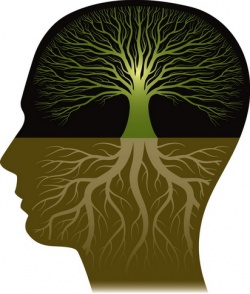Four major Buddhist holidays
The four major Buddhist holidays, four great festivals (Tib. düchen) are related to the life of Buddha Shakyamuni. On these days, the effects of positive or negative actions are multiplied 10 million times. They are:
The four major Buddhist holidays are in celebration of the life of Buddha Shakyamuni – the prince, Gautama Siddhartha, who reached enlightenment and shared the spiritual path of the Dharma (known as Buddhism) with the world.
It is believed that on each of the holidays, deeds (both good and bad) are multiplied by 10 million.
The Four Major Buddhist Holidays (Tibetan: དུས་ཆེན་) are:
The ===‘Festival of Miracles’ (Chotrul Düchen)===
The ===‘Festival of Vaishakha’ (Saga Dawa Düchen)===
The ===‘Festival of Turning the Wheel of Dharma’ (Chökhor Düchen)===
The ===‘Festival of the Descent from Heaven’ (Lha Bab Düchen)===
In this post, we’re going to look at each of the holidays, what they mean, and how they are celebrated.
The ===‘Festival of Miracles’ (Chotrul Düchen)===
Chotrul Duchen ཆོ་འཕྲུལ་དུས་ཆེན་ (also known as the ‘Festival of Miracles’ and the ‘Butter Lamp Festival’) is celebrated on the fifteenth day of the first month of the Tibetan calendar. The first 15 days of the year are important in Buddhism because this was the time during which Buddha would present a new miracle in order to increase devotion from his followers.
Those who celebrate make lamps, traditionally from yak butter, in the shape of various symbols – such as trees, birds, and flowers – which are then lit in celebration on the fifteenth day of the month.
Many also create elaborate displays within their homes that are used to display the lamps. Some even erect structures as large as buildings.
The ===‘Festival of Vaishakha’ (Saga Dawa Düchen)===
Saga Dawa ས་ག་ཟླ་བ་དུས་ཆེན་ (also known as the ‘Festival of Vaishakha’) celebrates the birth, enlightenment (nirvana) and prinirvana of Buddha Shakyamuni. In other Buddhist traditions, it is known as Vesak or “Buddha Day”. The Buddha was born in Lumbini, reached enlightenment at the age of 35 underneath a Bodhi tree in Bodhgaya. He passed away and reached parinirvana at the town of Kushinagara at the age of eighty. Saga Dawa is celebrated on the full moon day on the fifteenth day of the fourth month of the Tibetan lunar calendar, yet the celebrations often last for the entire month.
During the month of celebration, people generate good merit by giving generously, visiting temples, and making pilgrimage in order to honor Buddha’s last words. On his deathbed, Buddha asked his followers not to worship him with flowers and objects, but to follow his teachings and spread light into the world.
The ===‘Festival of Turning the Wheel of Dharma’ (Chökhor Düchen)===
Chökhor Düchen ཆོས་འཁོར་དུས་ཆེན་ (also known as the ‘Festival of Turning the Wheel of Dharma’) is celebrated on the fourth day of the sixth month of the Tibetan lunar calendar.
Following his enlightenment, Buddha didn’t teach. He continued this way for seven weeks until finally, after being encouraged by the gods Indra and Brahma, he “turned the wheel of Dharma” and taught The Four Noble Truths for his first five disciples. The Four Noble Truths འཕགས་པའི་བདེན་པ་བཞི་ are: the truth of suffering, the truth of the origin of suffering, the truth of cessation, and the truth of the path.
The ===‘Festival of the Descent from Heaven’ (Lha Bab Düchen)===
===Lha Bab Düchen=== ལྷ་བབས་དུས་ཆེན་ (also known as the ===‘Festival of the Descent from Heaven===’) is celebrated on the 22nd day of the ninth month of the Tibetan calendar. The celebration is commemorative of Buddha’s descent from heaven back to earth after spending three months teaching in the realms of the gods.
On this day, it’s traditional to spend more time praying and in virtuous activities as it’s believed that people receive back what they put out into the world.
